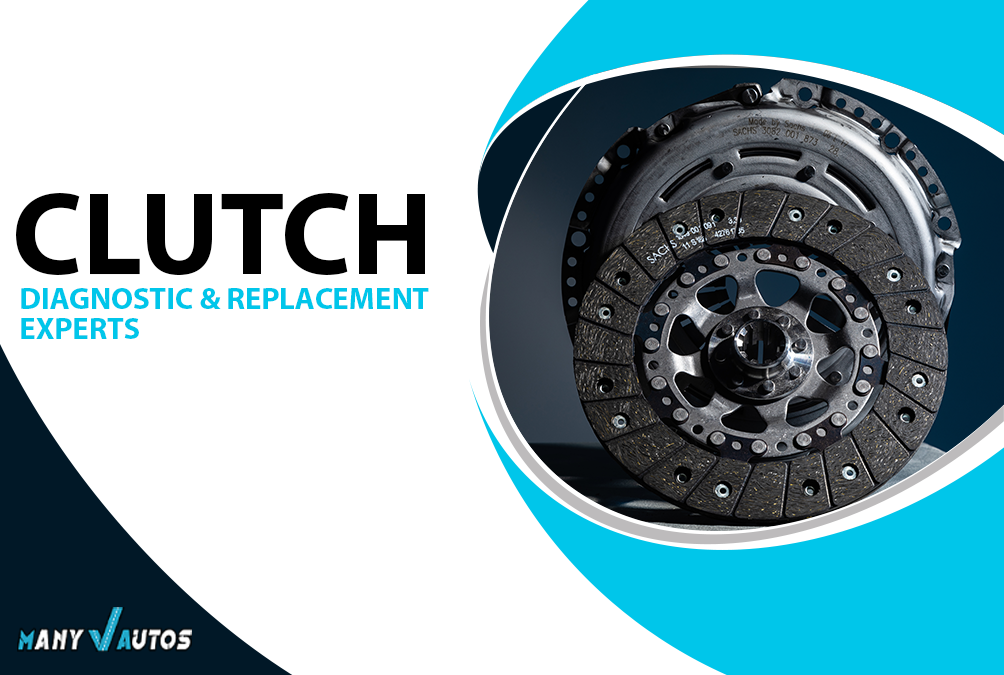
What Are the Common Signs of a Slipped Clutch?
Symptoms of Clutch Failure
A good clutch should be able to travel between 50,000 and 100,000 miles. This is determined by the make, model, and year of the vehicle, as well as the type of clutch and your driving habits. Stop-and-go traffic, towing large loads, abruptly engaging or "dumping" the clutch, and clutch riding.
In other words, keeping your foot on the brake and engaging the clutch halfway while decelerating are all factors that can cause clutch failure and necessitate immediate attention for clutch replacement. Contact your nearest car service in Reading garage to seek the help of a car mechanic.
You should be able to detect clutch failure symptoms if you pay attention to your vehicle. To figure out what's wrong and where it's coming from, keep an ear out for noises, clutch pedal behaviour, and performance.
Six common clutch failure symptoms are as follows:
1. Chattering Clutch Pedal When Engaged and Disengaged
When your clutch pedal vibrates, it means the clutch disc is losing its grip on the flywheel on an irregular basis. If you hear a noise when you depress or release the clutch pedal, or both, when the engine is turned off, the problem is most likely with the clutch release mechanism, also known as the "clutch fork."
The clutch fork is a hydraulic or mechanical device that aids in clutch engagement and disengagement. Noises will be heard as the lubricant runs out and the mechanism wears down. A cable, rod, or connection scraping can also cause squeaking or clunking.
2. When you accelerate, the clutch pedal pulsates
Your clutch pedal may pulsate if rotating parts inside your transmission wobble or vibrate. Warped flywheels or a faulty release lever may be to blame in these cases. If the pulsation or vibration began after you serviced the transmission, the transmission housing may be misaligned with the engine.
3. Clutch Pedal Sticks to the Floor
A stuck clutch pedal indicates a problem with the linkage or release bearing. Check that the linkage's springs are not overstretched – they may need to be adjusted in this case. Inspect the release bearing and ensure that the pedal stop is in place.
4. The Clutch Pedal Is Loose or Spongy
If your clutch pedal feels loose or spongey, inspect the release bearing or clutch fork for damage. The failure of the pressure-plate diaphragm spring is a common occurrence in mechanical units.
5. The Clutch Pedal Is Difficult to Engage
Every clutch requires some input or force from the drive to fully depress and engage. You have a problem with the release mechanism if you have to press down too hard to engage the clutch. In mechanical applications, this is a stuck or binding pedal linkage, cable, cross shaft, or pivot ball.
This will be a blockage or worn seals in hydraulic systems. In mechanical systems, inspect the cable, linkage, clutch fork, pressure plate, and throw-out bearing to see if they are properly lubricated or worn out.
6. Transmission Grinding, Whirling or Chirping Noise in Neutral
This is the most difficult of all clutch failure symptoms to identify. If your vehicle makes a grinding, whirling, or chirping sound in neutral but stops when you depress the clutch pedal, the noise could be caused by a worn-out input shaft bearing. It's not always clear whether the problem is caused by a faulty clutch or a bad transmission, so if you start having issues, consult your car mechanic or look for full car service near me.
If you hear grinding while changing gears, it means the clutch disc is still engaged. The transmission input shaft continues to spin when you fully depress the clutch pedal. Attempting to change gears while in reverse or otherwise will cause your transmission to grind as the input shaft continues to spin.
This grinding could be an indication of a problem with the pressure plate, throw-out bearing, or release mechanism. A mechanical release system's cable may be broken, frozen, overstretched, or in need of adjustment.
Grinding in a hydraulic system could indicate a problem with the clutch master cylinder, such as low fluid, air in the system, or a faulty internal cylinder mechanism. Also, look over the clutch pedal assembly. The pedal may have too much free travel and must be adjusted.
Clutch problems can also make shifting into or out of reverse or third gear difficult. A stuck gear could be the result of a linkage adjustment problem, a linkage malfunction, or a warped or damaged clutch plate. In a hydraulic system, failure to engage may indicate a problem with the master, slave, or both cylinders.
This is usually accompanied by a change in how the clutch pedal feels, such as sponginess, looseness, or not catching as well as it used to. On a mechanical system, you could be having problems with the clutch disc or pressure plate, release lever, release bearing, shift lever assembly, or control cable.
Common Signs of a Slipped Clutch
When your clutch slips, your car mechanic is referring to worn-out clutch friction material. Because your clutch only engages through friction, it will not engage properly if there is no material to provide that friction.
If your clutch is slipping, you'll notice that when you let go of the accelerator and accelerate, your car moves slowly while the engine revs higher. You may also notice that the clutch releases faster and with less effort than expected. If this is the case, search online for car service near me and request a professional mechanic to fix this issue.